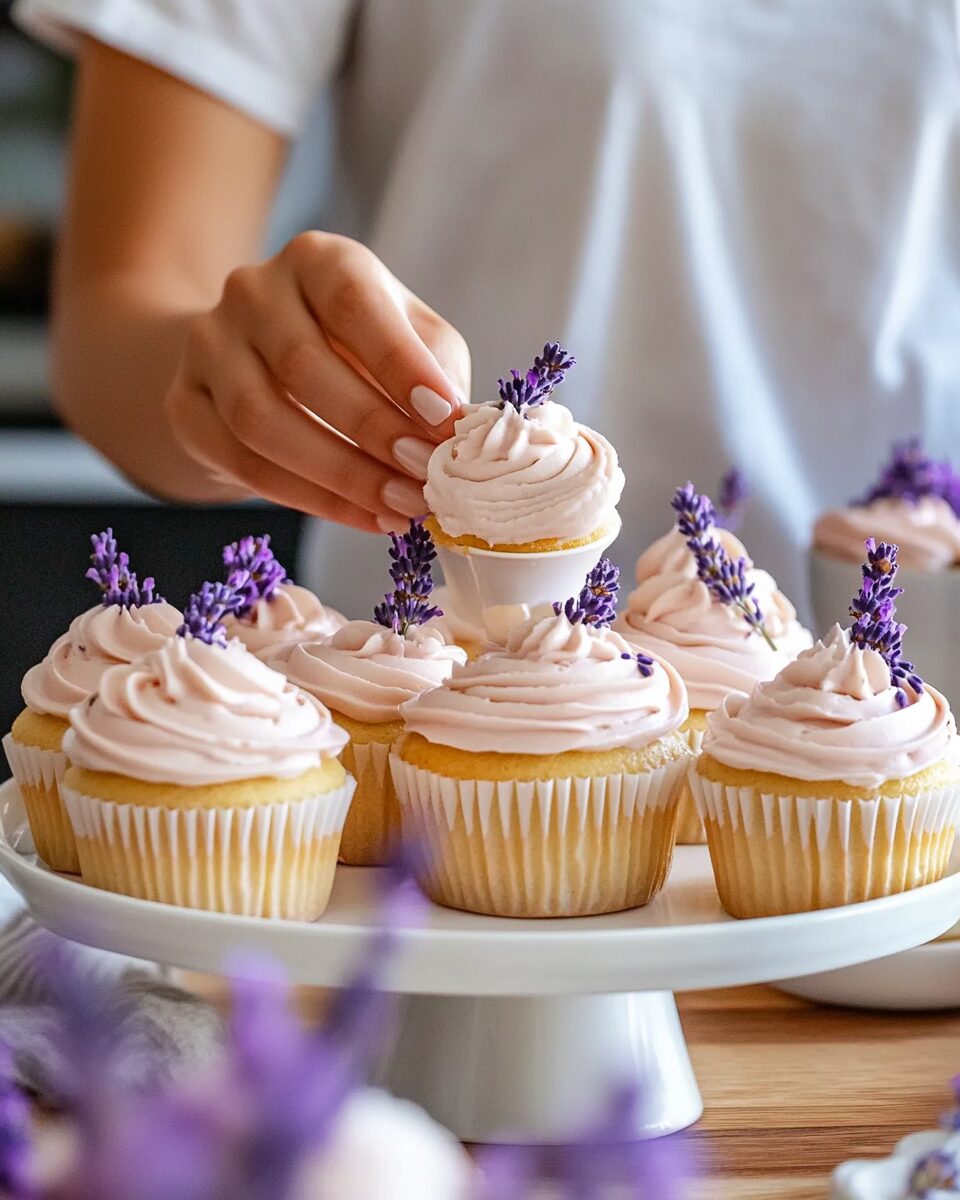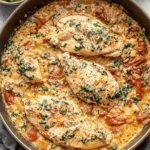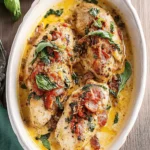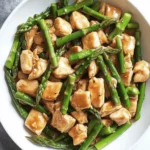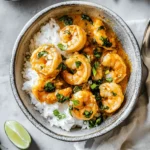Lavender Honey Cupcakes marry the fragrant aroma of culinary lavender with the smooth sweetness of honey in a tender, moist sponge crowned by a honey-infused buttercream. Ideal for afternoon tea or spring gatherings, these delicate treats offer a subtle floral note that delights the palate.
FULL RECIPE
Ingredients
- 1¼ cups (150 g) all-purpose flour
- 1 teaspoon baking powder
- ¼ teaspoon salt
- 2 tablespoons dried culinary lavender buds, finely ground
- ½ cup (113 g) unsalted butter, softened
- ½ cup (170 g) honey, divided
- ½ cup (100 g) granulated sugar
- 2 large eggs, at room temperature
- ½ cup (120 ml) whole milk
- 1 teaspoon vanilla extract
- ½ cup (113 g) unsalted butter, softened (for frosting)
- 1½ cups (180 g) powdered sugar (for frosting)
- 2 tablespoons heavy cream (for frosting consistency)
- Pinch of salt
Directions
- Preheat oven to 350 °F (175 °C) and line a 12‑cup muffin tin with paper liners.
- In a bowl whisk flour, baking powder, salt and ground lavender until combined.
- In a separate bowl cream ½ cup butter, ¼ cup honey and sugar until light and fluffy.
- Beat in eggs one at a time, mixing well after each addition, then stir in vanilla.
- Alternately add dry ingredients and milk to the butter mixture, beginning and ending with dry ingredients, mixing until just combined.
- Divide batter evenly among liners, filling each about two‑thirds full. Bake 18–20 minutes or until a toothpick inserted into the center comes out clean. Remove cupcakes to a wire rack to cool completely.
- For the frosting, beat remaining ½ cup butter until creamy, then gradually add powdered sugar, remaining ¼ cup honey, heavy cream and a pinch of salt until smooth and pipeable.
- Frost cooled cupcakes and, if desired, garnish with a few lavender buds or a drizzle of honey.
Nutritional Information
- Calories: 270 kcal per cupcake
- Total Fat: 13 g
- Saturated Fat: 8 g
- Carbohydrates: 35 g
- Sugars: 25 g
- Protein: 3 g
- Sodium: 80 mg
Flavor Profile
Lavender Honey Cupcakes deliver a delicate interplay of floral and sweet sensations that unfold with each bite. The subtle, aromatic essence of lavender gently wafts through the tender crumb while the mellow sweetness of honey lends a smooth, natural depth. Together, these elements create a harmonious balance where neither flavor overpowers the other, resulting in a sophisticated treat that appeals to both traditional and adventurous palates.
Historical Background of Lavender in Baking
Lavender’s use in culinary applications dates back centuries, originating in the Mediterranean where its fragrant blossoms were prized both for their scent and subtle taste. Medieval cooks incorporated lavender into sweetmeats and custards, and by the seventeenth century French bakers were perfuming cakes and confections with lavender buds. Over time, this delicate herb transcended borders, evolving into a specialty ingredient in modern artisanal patisseries worldwide.
Health Benefits of Lavender
Beyond its culinary charm, lavender possesses calming properties that have been recognized in herbal medicine for generations. Compounds such as linalool are thought to reduce stress and promote relaxation, while antioxidant constituents support healthy inflammatory responses. Although a cupcake cannot substitute for therapeutic remedies, the presence of culinary-grade lavender introduces a gentle botanical note that may subtly enhance a sense of well-being during indulgence.
Nutritional Aspects of Honey
Honey offers more than merely natural sweetness; it contributes trace enzymes, vitamins, and minerals that are absent in refined sugar. Rich in antioxidants like flavonoids and phenolic acids, honey supports immune function and provides more nuanced flavor layers. When used in baking, honey also helps retain moisture, yielding a tender, longer-lasting crumb. Its glycemic index, while still significant, is generally lower than that of white sugar.
Ingredient Selection Tips
Choosing top-quality lavender and honey is crucial to the success of this recipe. Opt for culinary lavender sourced from reputable growers, ensuring the buds are pesticide-free and intended for human consumption. Select raw or lightly filtered honey that showcases distinct floral notes rather than heavily processed varieties. High-quality, full‑fat dairy and fresh eggs will further enhance texture and mouthfeel, so prioritize organic or free‑range whenever possible.
Balancing Floral and Sweet Notes
Achieving an even distribution of floral intensity without overpowering sweetness requires attention to proportions. Grinding lavender to a fine powder helps disperse its fragrance uniformly throughout the batter, preventing pockets of strong flavor. Simultaneously, the division of honey between batter and frosting ensures consistency, offering honey’s nuanced taste in both layers. Tasting the batter prior to baking can guide minor adjustments for optimal balance.
Variations and Substitutions
While the classic recipe employs wheat flour and dairy, adaptations can accommodate dietary preferences. Almond flour or gluten‑free blends may replace some or all of the all‑purpose flour, though adjustments to liquid ratios are often necessary. For a dairy‑free version, coconut or almond milk alongside plant‑based butter alternatives can preserve richness. If lavender is unavailable, a small amount of dried rosemary or chamomile makes a complementary floral substitute.
Perfect Cupcake Texture
The hallmark of a well‑crafted cupcake is its delicate crumb, achieved through proper mixing techniques and ingredient temperatures. Room‑temperature eggs and dairy facilitate emulsification, ensuring a cohesive batter that traps air for lift. Overmixing after adding flour can develop gluten, resulting in a dense, chewy interior, so combine wet and dry components until just incorporated. Proper baking temperature and time are equally critical to prevent overbaking and dryness.
Creaming Technique Explained
The creaming method, where butter and sugar (or honey) are beaten until light and fluffy, is essential for incorporating air into the batter. This aeration contributes to rise and tenderness. When honey is involved, it’s often blended with butter to achieve smoothness before sugar is introduced. Patience during this step is key; under‑creamed mixtures will yield flatter cupcakes, while over‑creaming can break down the structure, causing collapse.
Infusing Lavender into Batter
To maximize lavender’s aromatic potential, gently warm milk with dried buds before adding it to the batter. This infusion process releases essential oils more effectively than simply stirring in ground lavender. Strain the milk to remove coarse particles unless an intentional speckled appearance is desired. Cooling the infusion to room temperature prevents destabilizing the creamed butter and eggs when combined.
Crafting Honey Buttercream
Honey buttercream differs from traditional sugar‑only frostings by offering a softer texture and richer flavor. Gradual incorporation of powdered sugar into softened butter, followed by honey and a splash of cream, yields a silken consistency suitable for piping. A light pinch of salt counterbalances sweetness and enhances the other flavors. Chilling the frosting briefly ensures it holds its shape on the cupcakes without becoming too stiff.
Presentation and Garnishes
Visual appeal amplifies the allure of Lavender Honey Cupcakes. A simple swirl of honey buttercream crowned with a single dried lavender bud or a delicate drizzle of warm honey elevates aesthetics. Edible flowers or a light dusting of powdered sugar can further accentuate the pastel tones of the cupcakes. Uniform piping and consistent garnish placement reinforce a polished, professional presentation.
Pairing with Beverages
The floral‑sweet profile of these cupcakes complements a range of beverages. Earl Grey or chamomile tea harmonizes with lavender’s fragrance, while a mild green tea offers a refreshing contrast. For coffee lovers, lightly roasted beans accentuate honey’s caramel notes without overwhelming the delicate floral aroma. Sparkling wine or a dry prosecco can also provide a celebratory foil to the cupcakes’ sweetness.
Seasonal Adaptations
Although inherently spring‑oriented, Lavender Honey Cupcakes can be tailored to other seasons. In summer, adding fresh berries or a fruit compote filling introduces vibrant acidity. Autumn versions might incorporate warm spices such as cinnamon or cardamom alongside lavender for cozy undertones. Winter renditions could blend orange zest or a hint of clove into both batter and frosting, creating festive flair without losing the signature floral essence.
Dietary Modifications
Vegan adaptations require careful ingredient swaps. Aquafaba (chickpea brine) can mimic egg structure when whipped, while vegan butter and plant‑based milk uphold texture. A certified gluten‑free flour blend combined with xanthan gum often replicates the crumb of all‑purpose flour. Always verify that lavender and honey substitutes—such as agave or maple syrup—align with dietary guidelines to maintain flavor integrity.
Storage and Shelf Life
Proper storage prolongs cupcake freshness. In an airtight container at room temperature, Lavender Honey Cupcakes remain tender for two to three days. Refrigeration can extend shelf life to five days but may slightly alter texture; allow chilled cupcakes to come to room temperature before serving. Avoid direct sunlight and humid environments to prevent frosting separation or cakey dryness.
Freezing and Reheating Methods
To freeze, wrap unfrosted cupcakes individually in plastic wrap, then place them in a sealed freezer bag. They can be stored for up to three months without significant quality loss. Thaw at room temperature, then pipe fresh buttercream just before serving. For already frosted cupcakes, quick freezing followed by airtight storage is possible, though some frosting texture changes may occur; gentle striking of excess frost can restore shape.
Sourcing High-Quality Ingredients
Reliable suppliers for culinary lavender and artisanal honey ensure consistent results. Health food stores and specialty spice merchants often carry lavender buds intended for cooking. Local beekeepers can provide small‑batch honey with distinct regional terroir. Whenever feasible, inspect ingredient packaging for harvest dates and certifications to verify freshness and quality standards.
Cost Considerations and Budgeting
Lavender and raw honey command premium prices compared to standard baking staples. To manage costs, consider purchasing these specialty items in bulk for multiple recipes or sharing with fellow bakers. Substituting a portion of honey with granulated sugar can lower expenses while maintaining adequate sweetness. Balancing ingredient quality and budget requires strategic planning based on recipe frequency and audience expectations.
Cultural and Regional Uses of Lavender
Lavender plays a versatile role in global cuisines beyond baking. In Provençal cooking, it seasons meats and vegetable stews, while in British tea culture it appears in shortbreads and scones. North American modernist bakers experiment with lavender‑infused caramels and gelatos. Understanding these diverse applications can inspire creative extensions of the Lavender Honey Cupcake concept into other desserts and savory dishes.
Conclusion
Lavender Honey Cupcakes exemplify the art of blending floral aromatics with natural sweetness in a refined baked good. Mastery of ingredient selection, infusion techniques, and precise balancing of flavors yields a treat that resonates across seasons and culinary traditions. Whether presented at a spring gathering or enjoyed as a daily indulgence, these cupcakes offer both visual elegance and sophisticated taste that captivate the senses. Experimentation with variations and adaptations ensures endless opportunities to personalize this classic recipe and delight any audience.

